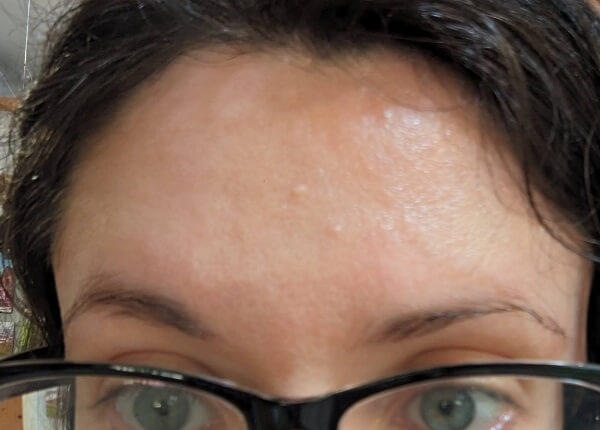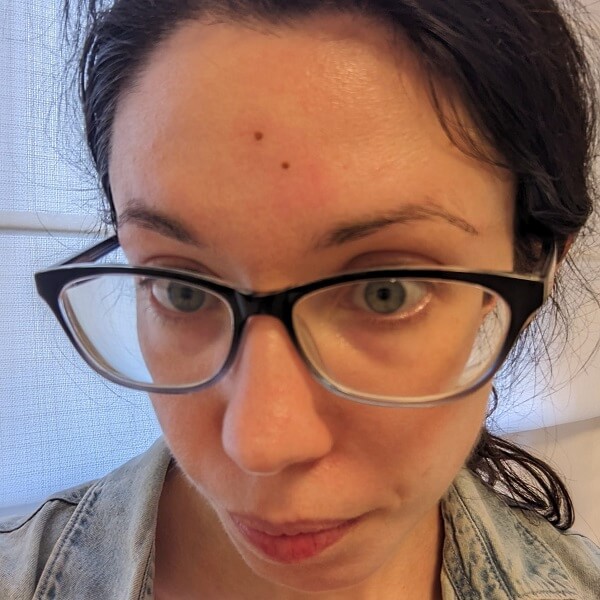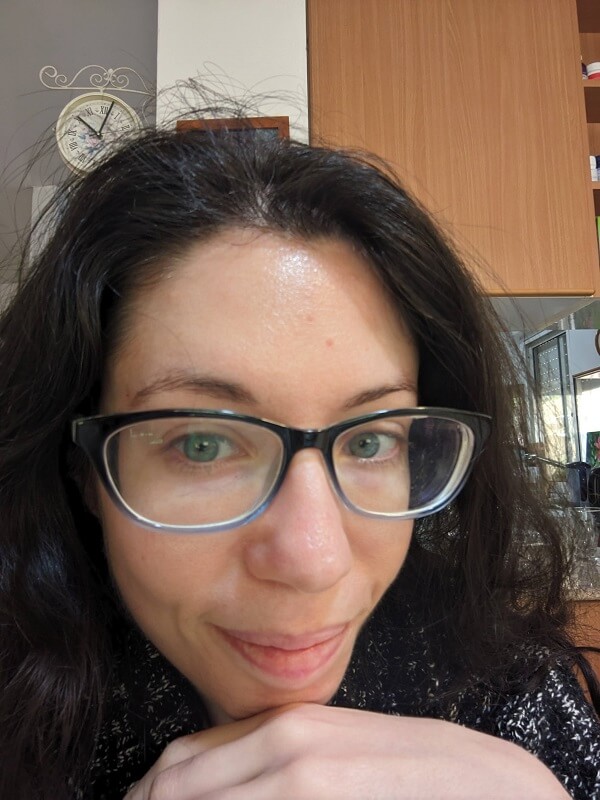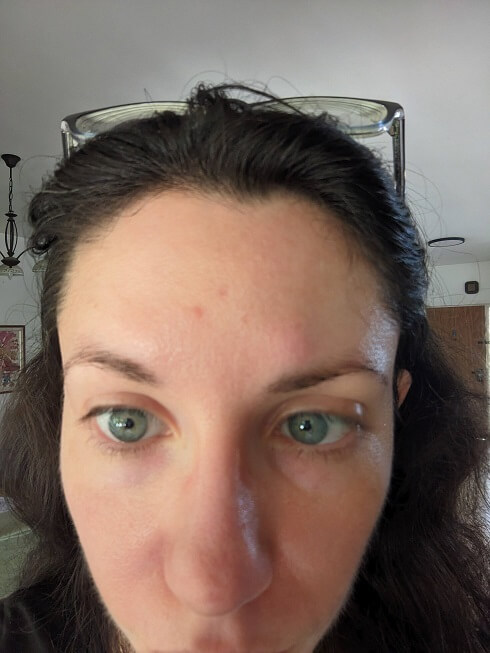I’ve always felt self-conscious about my sebaceous hyperplasia (benign skin growth). Over the last few years, I developed two little bumps that look like pimples or closed comedones right at the center of my forehead, with a bonus one above the tail of my eyebrow. It doesn’t sound like a huge deal, but they made me feel like a fraud. I’m a beauty writer, aren’t I?
Combining benzoyl peroxide and retinoids has mostly kept my breakouts under control, which only made the remaining bumps feel more infuriating. My annoyance rose every time I applied makeup or took a picture, especially since I don’t edit my photos. With that in mind, I finally decided to pursue sebaceous hyperplasia removal.
If you’ve been curious about having your own bumps removed, I hope that learning about my experience will help make your decision about whether to go through with it a bit easier.
What is sebaceous hyperplasia?

Sebaceous hyperplasia is a benign growth on the skin. It occurs when the sebaceous gland (the glands in human skin that produce oil) grows more than it should, and it usually looks like a little doughnut or connected nodules with an indent in the center.
If you’ve had a skin-colored pimple or wart on your face for months or years, it might actually be sebaceous hyperplasia. That said, before pursuing a cosmetic treatment, it’s important to get diagnosed by a doctor or dermatologist. Basal cell carcinoma, a type of skin cancer, can look a lot like sebaceous hyperplasia, so you’ll want to rule it out.
Choosing a sebaceous hyperplasia removal method
There are a few different methods to get rid of sebaceous hyperplasia, including laser, cryotherapy, and even trichloroacetic acid peels. Some sources recommend at-home treatments like prescription retinoids, but unfortunately, these products didn’t work for me.
The procedure I chose is called electrocautery, which uses a sharp, electricity-conducting needle. The heat from the needle simultaneously breaks down and cauterizes the skin.
I settled on electrocautery because it’s fast, affordable, effective, and causes minimal scarring. Laser also appealed to me, but I decided against it once I learned how expensive it is. I spent less than $100 to remove three sebaceous hyperplasia spots and opting for laser would’ve cost double or triple that amount.
My treatment experience

I scheduled my appointment with a medical aesthetician with a robust portfolio of electrocautery before and after photos and an impeccably clean treatment room. During a quick consultation, she confirmed that my sebaceous hyperplasia was indeed diagnosed. She also warned that I may end up with a small scar following the treatment.
After numbing my skin with a cream, we were ready to start. She got to work burning my bumps by using a disposable, single-use needle attached to the electrocautery machine. The sensation wasn’t pleasant, even with the topical anesthetic. I could feel the hot needle poke into my skin repeatedly, and the burning smell was horrific. On the bright side, the entire process took under five minutes, and the bumps were gone by the end of it.
The area hurt a bit and felt sensitive but more worryingly, it looked like I had brown-red craters where the bumps once were. Now it was a matter of babying the skin with an ointment I was given and waiting for healing to commence.
The healing process

On the second and third days after the treatment, my biggest concern was avoiding touching the area so it could heal while still keeping my skin clean and moist. Those red craters soon filled in with much darker scabs than I had expected — and they were difficult to conceal with makeup.

When I washed my face, they came off, which I worry may have increased my chances of scarring. Thankfully, within a few more days, the wounds continued to heal, and eventually, I was left with slightly red, indented skin that continued to improve day by day.

A little over two weeks after the treatment, I still have barely noticeable pinkish indentations where the sebaceous hyperplasia once was. I know it might take a few months for the redness to totally fade from my skin, but how the indentations will heal remains unclear.
That said, if I’m left with minor scars, that’s OK. These indentations are much easier to hide compared to the protruding bumps I had, and I hope that with time, they’ll heal more thoroughly.
The right decision for me may not be right for you
This was by far the most invasive cosmetic procedure I’ve ever undergone, although the medical community considers it minimally invasive. But what’s a little bit of short-term pain for the sake of feeling a little more comfortable in my skin? The reality is that none of my friends or family have ever said a word about my bumps — it was a personal and subjective choice.
I appreciate my aesthetician taking the time to conduct a consultation and warn me about the potential for scarring. She also explained that I might develop more sebaceous hyperplasia in the future, especially as I get older. I hope it won’t be too bad as long as I keep up with consistent sunscreen and retinoid use.
Although going through with the procedure was the right decision for me, it may not be the route for you. Take some time to think about it, consult your doctor, and weigh the pros and cons before booking an appointment.





